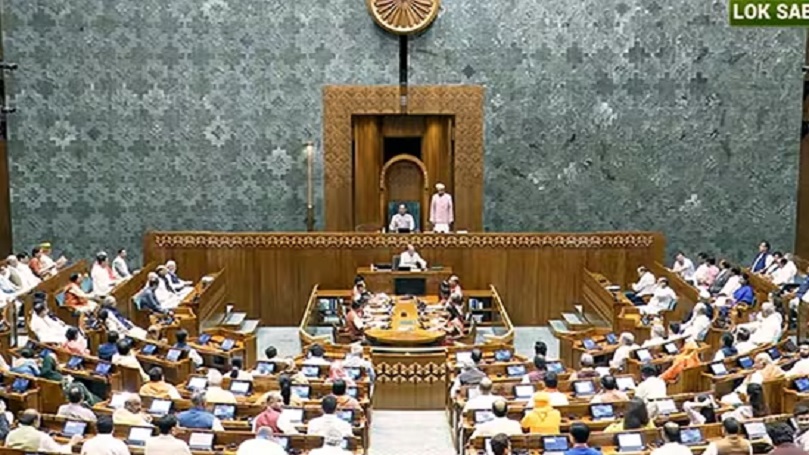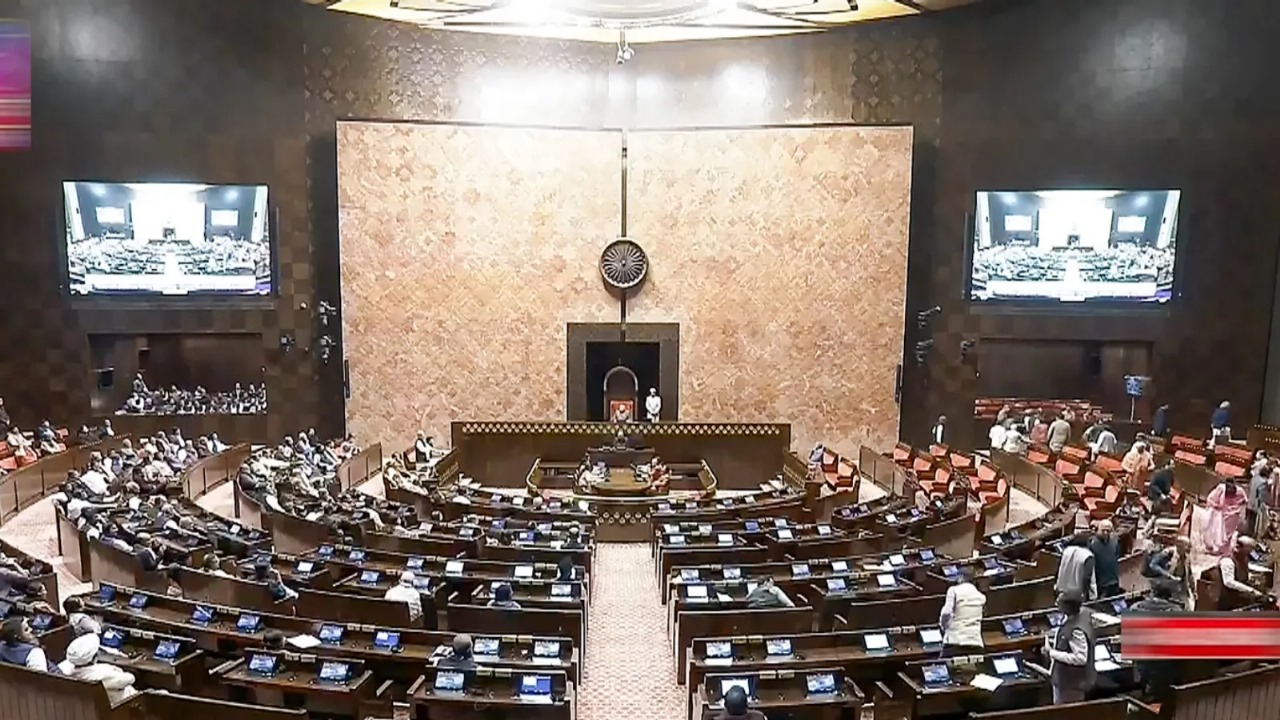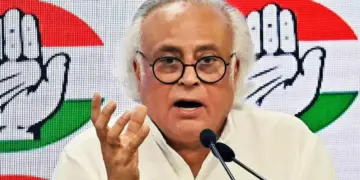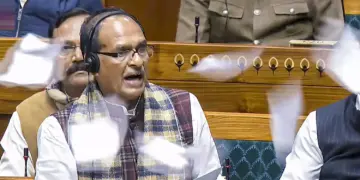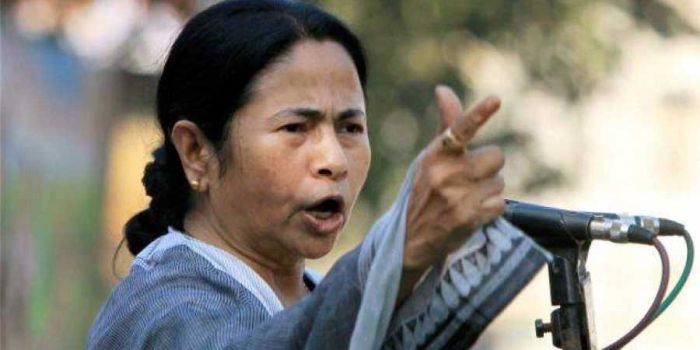New Delhi: Lok Sabha proceedings on Tuesday began in the new Parliament building, located adjacent to the old one, starting a new chapter in the parliamentary history of India.
Prime Minister Narendra Modi, who walked down from the old building along with Union Ministers including Amit Shah, Rajnath Singh, Nitin Gadkari and other leaders, was present on the occasion.
Initiating the first day of the proceedings, Lok Sabha Speaker Om Birla urged on members to set a new standard of parliamentary debate by raising people’s issues, as he extended greetings of Ganesh Chaturthi, and called the move to the new parliament house a historic event.
Birla also paid his tributes to leaders who built the nation and gave India its own constitution.
The new parliament building boasts of a palette of colours and architecture that takes its cue from everything Indian, from ancient to medieval.
The colour used in Rajya Sabha has been inspired by the shade of kokum red, while the look of Lok Sabha is based on Indian agave green with inspirations from the plumes of the Indian peacock.
The new Parliament building, inaugurated by Prime Minister Modi on May 28, has artwork narrating India’s democratic traditions from the Vedic period to the present day.
The journey of democracy in the country is depicted through a series of exhibits in the Constitution Hall in the new Parliament building, which itself is inspired by the Sri Yantra, used for worship by many Hindus and considered a source of energy.
The building has three ceremonial foyers where huge brass images of Mahatma Gandhi, Chanakya, Gargi, Sardar Vallabhbhai Patel, B R Ambedkar, and the Chariot Wheel from the Sun Temple at Konark are on display.
The public entrances lead to three galleries — the Sangeet Gallery which exhibits dance, song, and musical traditions of India, the Sthapthya Gallery which depicts the architectural heritage of the country, and the Shilp Gallery which showcases handicraft traditions of different states.
The interiors of the Lok Sabha chamber are based on the theme of peacock, our national bird, while that of the Rajya Sabha takes it hues from lotus, the national flower.
The four-storey Parliament House has a built up area of 64,500 sqm and has two chambers – an 888-seater Lok Sabha, which can accommodate 1,272 members for the joint sitting of both the Houses, and a 384-seater Rajya Sabha chamber.
The building opens into a central courtyard with a banyan tree.
The new building also has six new committee rooms and 92 rooms for use as offices for the Council of Ministers.
There are six entry-exit points or ‘dwars’ in the new Parliament building, all inspired by ancient sculptures.
The Gaj Dwar has two stone elephant statues that have been inspired by statues at Madhukeshwara temple in Banavasi in Karnataka dating back to 9th century CE, while two horse statues at the Ashwa Dwar have got their inspiration from sculptures at 13th century Sun temple in Odisha.
The statues at three other dwars – Shardula, Hamsa, and Makara – are inspired by sculptures at Gujri Mahal in Gwalior, Vijay Vithala temple in Hampi, and Hoysaleswara temple in Karnataka.
The remaining Garuda dwar has as its sentinel the statues of mount (vahana) of Vishnu and have been inspired by 18th century CE Nayaka period sculpture from Tamil Nadu.
New Parliament building designated as Parliament House of India
Old Parliament building renamed ‘Samvidhan Sadan’
The new Parliament building has been designated as the Parliament House of India, a Lok Sabha Secretariat notification said.
“The Speaker, Lok Sabha is pleased to notify the new building of Parliament situated in the precincts of the Parliament House on Plot Number 118, New Delhi, east of the existing Parliament House with Raisina road to the south and Red Cross road to the north, to be, hereon, designated as the Parliament House of India,” said the notification issued on Monday.
The old Parliament building will now be known as ‘Samvidhan Sadan’, Lok Sabha Speaker Om Birla said on Tuesday as the functioning of Parliament shifted to its new building here.
The Speaker also announced that henceforth, terms such as ‘House’, ‘Lobby’, and ‘Galleries’ used in the proceedings of the Lok Sabha will refer to the new building, which is now the Parliament House of India.
“The building where we gathered in the morning will now be known as Samvidhan Sadan,” he said.
Earlier, at a function held in the Central Hall of the old Parliament building, Prime Minister Narendra Modi suggested that the building should be renamed “Samvidhan Sadan”.
“We are shifting to the new Parliament building. It is an auspicious day, it is Ganesh Chaturthi,” he said.
“My suggestion is that as we are going to the new building, the glory of this building should never decline. It should not be called just the old Parliament… It can be named Samvidhan Sadan,” Modi said.
Members of Lok Sabha and Rajya Sabha on Tuesday gathered at the historic Central Hall of the old Parliament building for the function.

